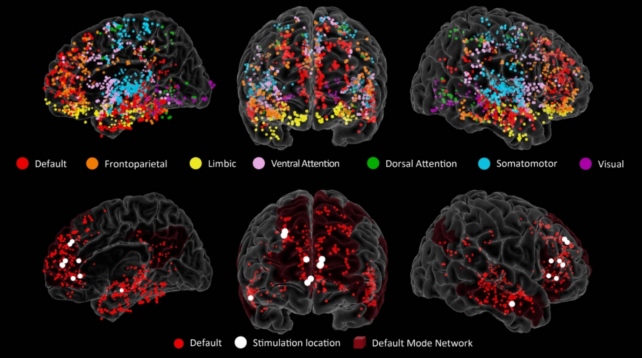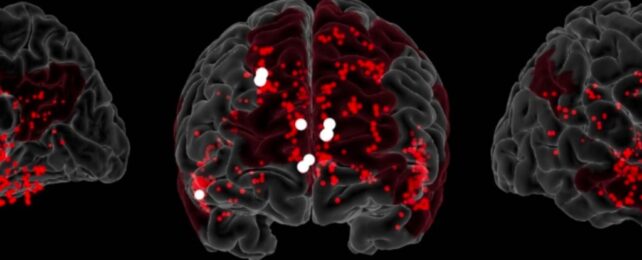Neuroscientists think they have identified the large-scale neural network that keeps the brain's creative juices flowing.
Creative thought isn't confined to any one part of the brain's wrinkled outer cortex, but a team of researchers, led by Baylor College of Medicine, think they have found the circuits fundamental to some types of creativity.
When nine adult participants had specific parts of their default mode network (DMN) temporarily suppressed via deep brain stimulation, they could no longer think outside of the box to the same extent.
The DMN's web activates when the mind is wandering freely from thought to thought. It is structured perfectly for thinking outside of the box, making connections between "seemingly remote concepts" to come up with unique ideas or solutions in a spontaneous, free-flowing way.
Previous brain imaging studies have linked DMN activity to creative thoughts before, but in 2022, University of Tel Aviv neurosurgeon Ben Shofty and his colleagues were the first to find a causal relationship between the two.
When removing brain tumors from willing and awake patients, the neuroscientists discovered that electrically inhibiting the DMN shut off their participants' creative flow. The volunteers could no longer come up with as many novel uses for everyday items, like a chair or a cup.
Working with the University of Utah, Shofty and his fellow researchers have now shown a similar effect in participants undergoing invasive epilepsy monitoring.
This cutting-edge technique relies on implanted brain electrodes, allowing scientists to carry out 'deep brain stimulation' of certain neural networks and see what happens to electrical activity.
Unlike fMRI studies, which guess at brain activity through the flow of blood oxygen, electroencephalograms directly measure neuronal electrical activity in real time. Electrodes embedded within the brain are even more sensitive than those pasted onto the skull.

In the current study, 13 epilepsy patients with implanted electrodes were asked to list as many novel uses for an everyday item as they could think of. They had a minute to complete the task.
"We could see what's happening within the first few milliseconds of attempting to perform creative thinking," says Shofty.
The DMN was the first part of the brain to light up. Shortly after, the network had synchronized its activity with other regions in the brain, such as those involved in problem-solving and decision-making.
Shofty thinks this is a sign that the DMN is retrieving and sifting through different types of information to generate novel ideas before sending them to be judged by other regions involved in critical thinking. This 'top-down' cognition allows the brain to "parse through inappropriate associations and select for useful, novel thoughts," the authors say.
The recent findings help explain why taking a shower and letting your mind wander can be so useful at producing original thoughts and solutions.
Among all 13 participants, researchers found some specific parts of the DMN were particularly tied to lateral thinking, while others were more closely tied to mind wandering.
Using implanted electrodes to temporarily suppress those parts of the DMN tied to lateral thinking made it harder for patients to come up with novel uses for everyday items. Their mind-wandering, however, remained intact.
"We moved beyond correlational evidence by using direct brain stimulation," says neurosurgeon Eleonora Bartoli from Baylor College of Medicine.
"Our findings highlight the causal role of the DMN in creative thinking."
The study was published in Brain.
